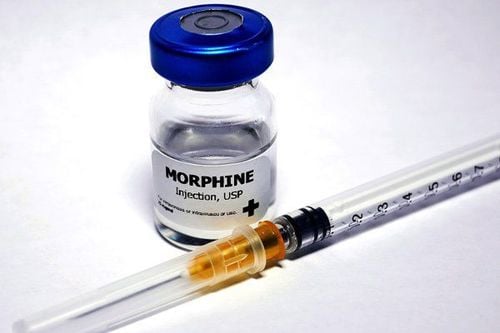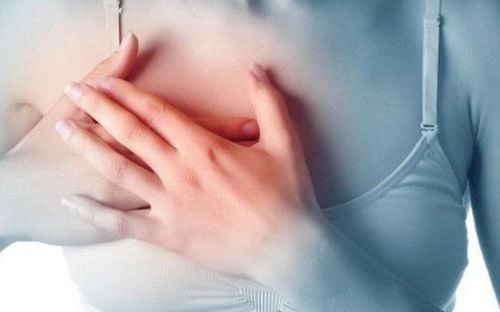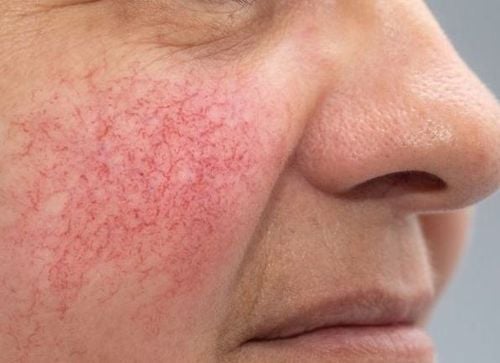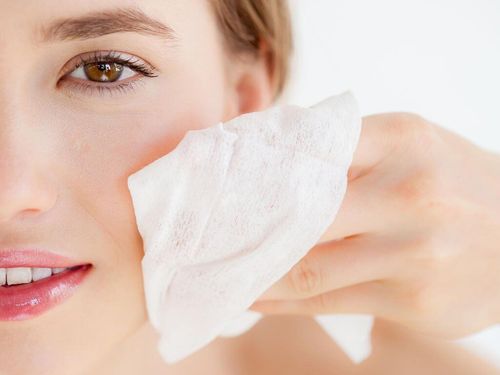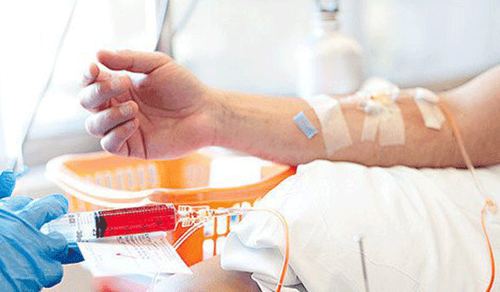This is an automatically translated article.
The effects of cancer treatment involve not only the diseased organ but also many different parts of the body. Dark skin during chemotherapy and painful nails with cancer are among the changes that can be experienced in patients.
1. Effects of cancer treatment on skin and nails
Cancer treatments can cause skin and nail changes. Patients need to be consulted by a specialist to know the unwanted side effects that the treatment regimen may cause. Although skin problems from radiation and chemotherapy are usually mild, they can be more serious if you're having a stem cell transplant, targeted therapy, or immunotherapy.
Dark skin during chemotherapy and nail pain with cancer are 2 of the abnormalities related to the skin and nails that patients can experience. Sometimes radiation therapy causes the skin on a person's body to receive more radiation and become dry, flaky, itchy, and red or darker. The skin may burn or become swollen and blistered. Patients may develop large sores on the skin that are painful, moist, and infected.
Some chemotherapy drugs can cause your skin to become dry, itchy, red or darker, and flaky. Chemotherapy tanned skin may look like a sunburn with a red rash. Some people also experience changes in skin pigmentation. In addition, the nails can darken and crack, the cuticles on the skin can be damaged.

Da sạm khi hóa trị là do ảnh hưởng từ các phương pháp điều trị ung thư
Stem cell transplant treatments can cause graft-versus-host disease (GVHD). The condition can also cause problems like rashes, blisters, or thickened skin.
Some immunotherapies can cause a severe and sometimes widespread rash on the skin. Patients treated with certain types of immunotherapy have dry or blistered skin.
Some types of targeted therapy can cause dry skin, rashes, and nail-related problems. If a skin rash is present, it's important to talk to your doctor before stopping targeted treatment on your own.
2. Recognize the effects of cancer treatment on the skin and nails Patients can proactively ask their doctors questions about skin and nail changes based on the cancer treatments they receive. Sorting out what symptoms can be managed at home and urgent medical care is essential.
If you have a severe rash that covers a large area, blisters or is painful and is being treated with immunotherapy, call your doctor for advice.
Some of the skin changes that cancer patients may experience include:
Acne . Pressure sores are common in patients who stay in bed for a long time. Skin blisters. Burns or sore skin. Dry skin. Hand-foot syndrome (palm-vegetative erythema). Hyperpigmentation (darker areas of skin, often found at joints). Decreased skin pigmentation (lighter patches of skin). Itchy skin (itching). Peeling or scaly skin. Sensitivity to light (prone to sunburn). Red rash. Red or dark skin. Painful skin sores. Swollen skin.

Da sạm khi hóa trị có thể trông giống như bị cháy nắng kèm theo nổi ban đỏ
Some of the changes in the nails during cancer treatment:
Cracked nails are an effect of cancer treatment. The epidermis is swollen and/or painful. Acute nail infection. Golden nails. 3. Manage skin and nail changes during cancer treatment Talk to your doctor to find out if you should treat these problems at home. Depending on your current cancer treatment regimen, your doctor may recommend the following steps:
Use only skin products recommended by medical organizations. Use soap that is gentle on the skin. Ask your doctor to recommend specific skin products. If you are receiving radiation therapy, ask about products that are specific to the skin in this case, such as powders or antiperspirants, that you should avoid prior to treatment. Prevent infection: Radiation therapy can cause the skin in the treatment area to become flaky, painful, and moist. This usually occurs in places where the skin has folds, such as around the ears, breasts, or buttocks. Try to keep the area clean and dry to avoid infection. The care nurse will advise on how to clean the area of skin and may prescribe special dressings and/or antibiotics. Moisturize your skin: Use recommended creams or lotions to prevent your skin from becoming dry and irritated. Ask about special creams or ointments for severely dry, itchy, and painful skin. Protect your skin: Use the right sunscreen and lip balm. Wear long clothes and a wide-brimmed hat when outdoors to avoid sunburn. If you are receiving radiation therapy, do not use heating pads, ice packs, or bandages on the treatment area. You should not use a razor regularly, even with an electric razor, and stop shaving if the skin is tender and painful. Prevent or treat dry, itchy skin: Avoid products that contain alcohol or fragrance ingredients, as they can irritate your skin. You can add colloidal oatmeal to your bath as it works to relieve itching. Shower briefly or with warm, not very hot water. Apply the recommended lotion or ointment immediately after bathing, while the skin is still slightly damp. Apply a cool washcloth or ice to dry, itchy skin. Prevent or treat minor nail problems. Keep your nails clean and short to avoid accidentally tearing the skin; protect your hands and nails by wearing protective gear when you wash dishes or clean the house; avoid manicure, pedicure; do not wear tight shoes. Learn about treatments for uncomfortable or painful skin rashes. Sometimes skin problems need medical treatment. The rash can be treated with topical creams (topical corticosteroids) or tablets.

Sử dụng các loại kem được khuyến nghị để ngăn da không bị khô và kích ứng.
When visiting the doctor during routine visits, patients should be frank by asking questions related to issues such as:
What are the common skin and nail related side effects for patients? the methods that I am being treated for? Are there steps I can take to prevent skin and nail changes? What problems should I call my doctor? Are there any signs that suggest I need immediate medical attention? When can skin and nail problems appear? How long can they last? What brand of soap and lotion will my doctor recommend? Which one to use for my nails? Are there any skin and nail products that I should avoid? Should I see a dermatologist so I can learn more about how to prevent or manage skin problems? These questions will help patients have more knowledge to care for their skin and nails during cancer treatment.
Please dial HOTLINE for more information or register for an appointment HERE. Download MyVinmec app to make appointments faster and to manage your bookings easily.
Source Reference: cancer.gov



